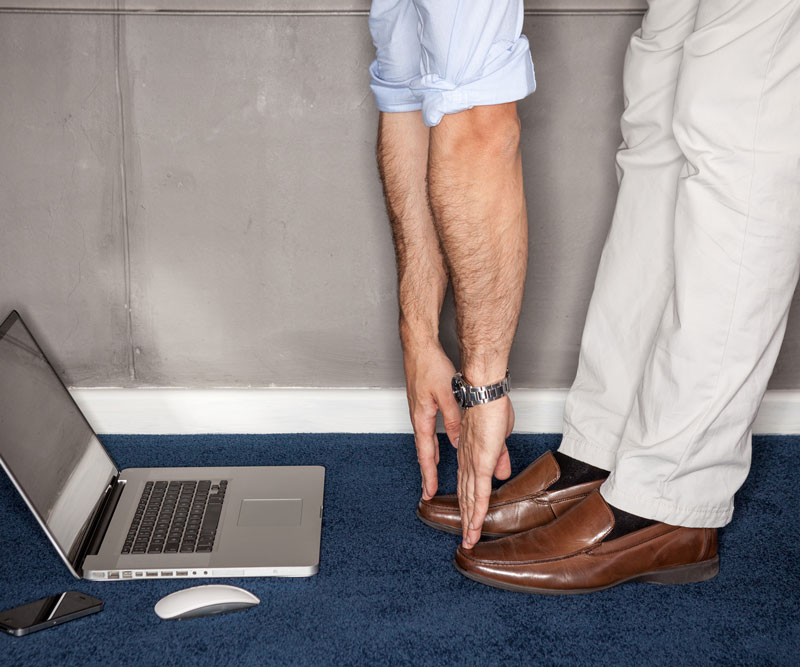
Is High-Tech Giving You a Pain in the Neck?
Because we live in a constantly connected world, our frequent use of smartphones can give us a pain in the neck – literally and figuratively.
If you are suffering with any of the following symptoms, you might have “tech neck”:
- Aching pain in your neck or shoulders.
- Tingling or numbness radiating down one of your arms.
- Headaches behind your eyes or in the back of your head.
Tech neck (also called “smartphone neck” and “iPhone neck”) is a 21st-century problem caused by straining your neck forward to see your cellphone or screen, thus creating poor posture.
This posture is becoming more and more prevalent as people from 2 to 90 years old are tethered to their handheld devices. Even a 1-year-old can grab a cellphone, turn it on, discover the photos, click on colorful apps and get mesmerized by the animation!
Ordinarily, the frequency of neck pain increases with age, but recently, doctors are treating more and more young patients with neck pain.
An Increasingly Common Complaint
You have seen people with their heads down, neck straining at an unusual angle, shoulders hunched forward, eyes squinting at the screen, with their thumbs in a blur while they text their friends or send messages to their bosses. By staying in that position for longer than we should, neck pain may begin to develop.
Your neck is perfectly designed to support the weight of your head, which is about 10-12 pounds. For every inch you drop your head forward, however, research shows that you double or triple the load on those muscles. In other words, you can put about 60 pounds of pressure on your neck if you are looking down at your iPhone with your chin on your chest!
You can put about 60 pounds of pressure on your neck if you are looking down at your iPhone with your chin on your chest!"
Tilting the head down or straining the head forward changes the natural curve of your neck. It can strain the muscles and cause wear and tear on the structures of the neck.
This habit can accelerate disc degeneration, arthritis and perhaps cause bulging or herniated discs.
Additionally, sitting in slumped positions impairs your lungs' ability to expand, restricting overall lung capacity. If you are inhaling less oxygen, your heart has to pump harder to distribute oxygen throughout your body.
Ways to Correct Tech Neck
So, what can be done, short of disconnecting yourself from the world by relaxing at a blue lagoon and "accidentally" dropping your phone in the clear water?
Some steps you can take to correct tech neck include:
- Straightening up by learning proper posture and neck alignment.
- Raising your mobile device to eye level rather than looking downward.
- Setting up the proper ergonomics for your computer.
- Getting an adjustable chair with lumbar support.
- Taking frequent mini breaks to give your neck, shoulders and eyes a break.
- Learning some neck stretches.
One exercise you can begin with is called the chin tuck. Sitting back in a chair, gently move your chin backward, as if you are making a double chin. You should feel a comfortable stretch at the base of your skull. Repeat 10 times several times throughout the day.
Although technology is quite amazing, it has its drawbacks to our health. If left untreated, tech neck may lead to more serious complications.
If your cellphone or computer is causing you to experience neck or arm pain or headaches, the great news is that making conservative changes can often correct those painful symptoms. An evaluation by your primary care physician or physical therapist may be a good first step.
A physical therapist can provide expertise to help you change your posture and relieve pain. This may include stretching your neck and shoulder muscles, strengthening your back, providing soft tissue mobilization to help the tight muscles and joints to relax, and evaluating your personal needs at work and home.
Contributed by Cindy Geiger, physical therapist, Straub Medical Center
Cindy Geiger is a physical therapist at the Straub Medical Center – Hawaii Kai Clinic, where she has worked for the last 30 years.
Geiger works with patients of all ages and specializes in rehabilitation services following hip and knee joint replacements, fractures, other orthopedic and neurological diagnoses, as well as treating injuries to the neck, back, shoulder, knee and ankle.
Published on: December 14, 2016




